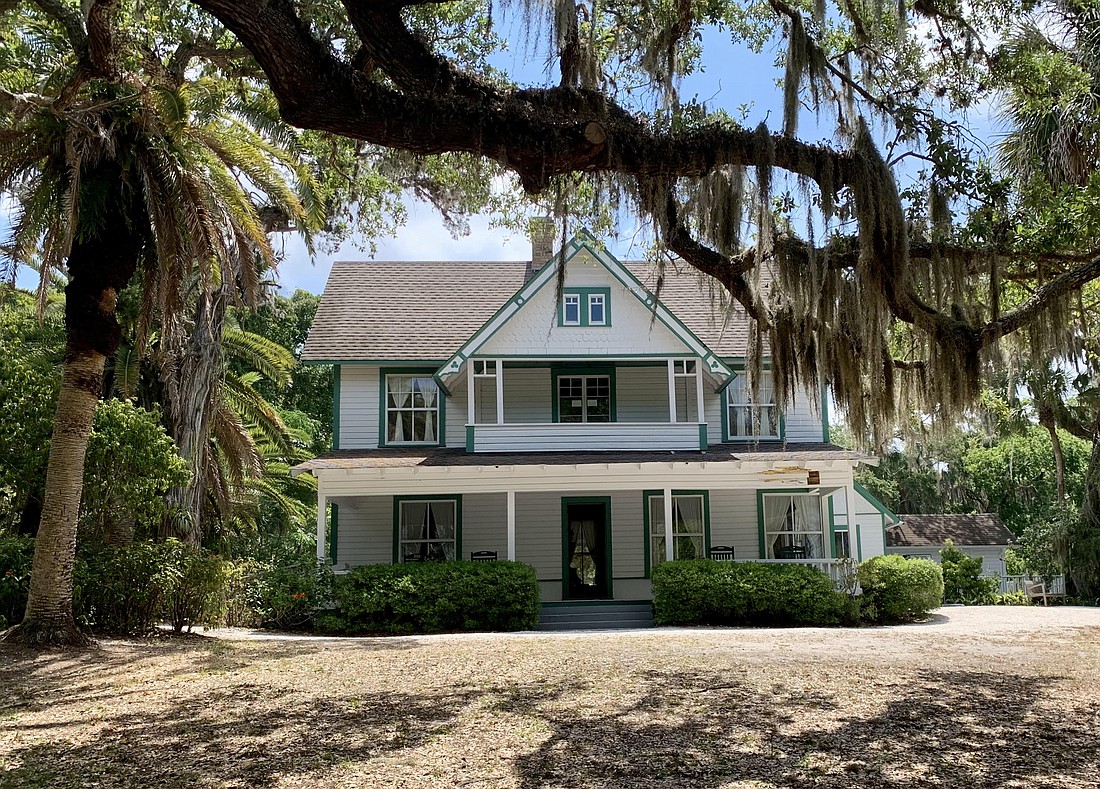- January 3, 2025
-
-
Loading

Loading

Sarasota County is home to the likes of author Stephen King, AC/DC lead singer Brian Johnson and television personality Jerry Springer.
And although no one can deny the star power of 2021, the county also was home to famous figures 100 years ago. While perhaps not nationally known, these figures had a large impact on the foundation of the county.
John Hamilton Gillespie
Often referred to as “the father of Sarasota,” Gillespie was born in Edinburgh, Scotland, in 1852.
The Scot was sent to Sarasota in 1886 to assist a failing colony of about 60 Scottish families who were sent to the area to settle land acquired by the Florida Mortgage and Investment Co., partially owned by Gillespie’s father.
Under Gillespie’s leadership, 3 miles of Main Street were cleared, a wharf was built on the waterfront, and a 40-acre farm was built. In 1902 he was elected Sarasota’s first mayor and held office for six terms.
Perhaps his most notable contribution is introducing Florida to golf. In 1904 he built a nine-hole course east of present-day Links Avenue. It was the second golf course in the U.S. He died on his golf course in 1923 and was buried in the Rosemary Cemetery.
Today, Gillespie Park is named for him.
Owen Burns
When Burns arrived in Sarasota in 1910, he purchased about 75% of the city’s land from Gillespie for $35,000, worth about $1 million today.
Upon his purchase, Sarasota was a dirt-road town with a few real estate developments started by Gillespie. Burns helped start the Sarasota Board of Trade, later known as the Chamber of Commerce, and the first bank.
He is credited with creating an urban city after bringing the first paved streets, the first seawalls and the original causeways connecting St. Armands and Lido Key. He oversaw the creation of Golden Gate Point and Sunset Park.
He also was a key resident pushing for the establishment of Sarasota County.
Historic Burns Court district is named for him.
Bertha Palmer
After such figures as Gillespie began developing the area, socialites began vacationing in Sarasota. Palmer, a Chicago socialite, bought a vacation home the same year Burns arrived, 1910.
An agricultural businesswoman by trade, Palmer, already in her 60s, purchased 80,000 acres to use for cattle ranching. The land she acquired composed about one-fourth of modern day Sarasota County.
She also introduced purebred hogs, a canal farming system to drain marshes and experimental horticultural practices to the region. Her botanical legacy can be seen in her home at Historic Spanish Point. Her two sons, Potter II and Honoré, established citrus groves and cattle ranches in the county after her death in 1918.
Aside from farming, Palmer helped extend the railroad from Manatee County south to modern-day Venice.
Myakka River State Park was opened in 1941 after Palmer’s family gifted nearly 2,000 acres to the state of Florida.
Palmer Ranch bears her family name. Potter and Honoré also are represented in local landmarks.
READ MORE CENTENNIAL COVERAGE: Start of Sarasota County was contentious
John and Mable Ringling
Although developments already were underway when the Ringlings arrived, they are often credited with bringing artistic features to the county.
In 1911, John Ringling, along with his brother Charles and co-founder of the Ringling Brothers Barnum & Bailey Circus, began purchasing land. At one point, the Ringlings owned more than 25% of Sarasota’s land mass.
In 1917, Ringling purchased St. Armands Key and developed its circle shopping district. Ringling’s circus elephants helped haul timbers to build the original bridge from the mainland to the islands.
His booming circus business often took him to Europe, where he amassed a collection of European art. In 1929, the Ringlings fell upon financial hardship.
Although he once was worth an estimated $200 million, John Ringling died in 1936 with $311 in the bank. He donated his art collection to the public, many works of which can be seen in the Ringing Museum.
Rose Phillips Wilson
Phillips Wilson was married to Cornelius Van Santvoord Wilson, a newspaper man 40 years her senior. Together, they founded the area’s first newspaper, The Sarasota Times, in a small building on Main Street.
The first edition was published June 1, 1899, 22 years before Sarasota officially became a county. They ran the weekly publication together until Wilson died in 1910.
Phillips Wilson, then 33, became the editor and proprietor of the paper. She often used the paper to spread news about the suffrage movement and was the first woman in Sarasota to register to vote.
She was a founding member of the Town Improvement Society, later the Sarasota Woman’s Club, and chaired the Membership Committee for the Board of Trade.
When the county was formed, Phillips Wilson changed the name of the paper to The Sarasota County Times. In 1923, she sold the paper to the Sarasota Publishing Co. so it could better keep up with the community.